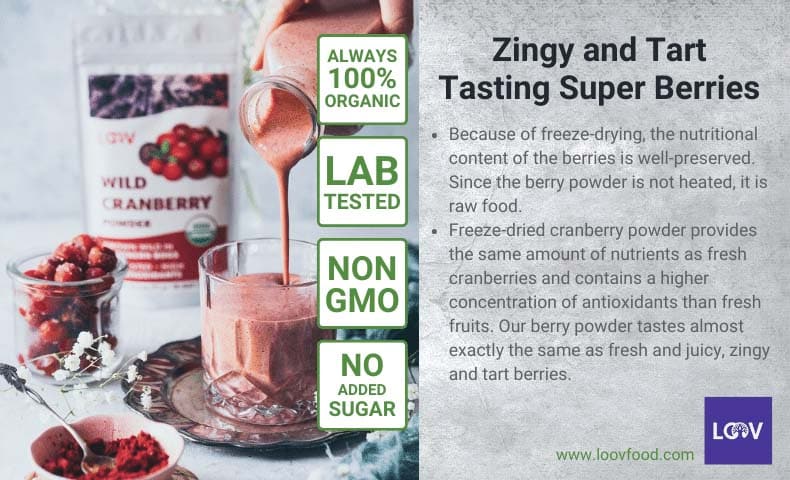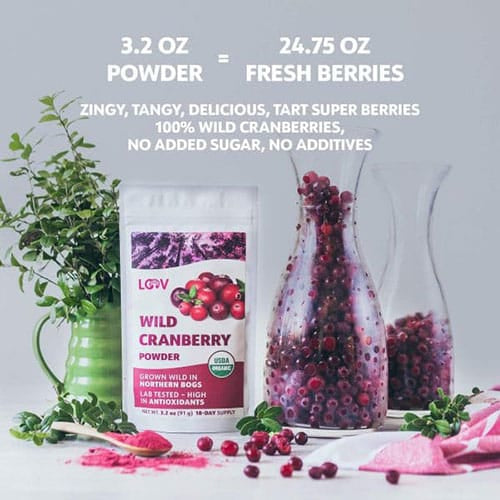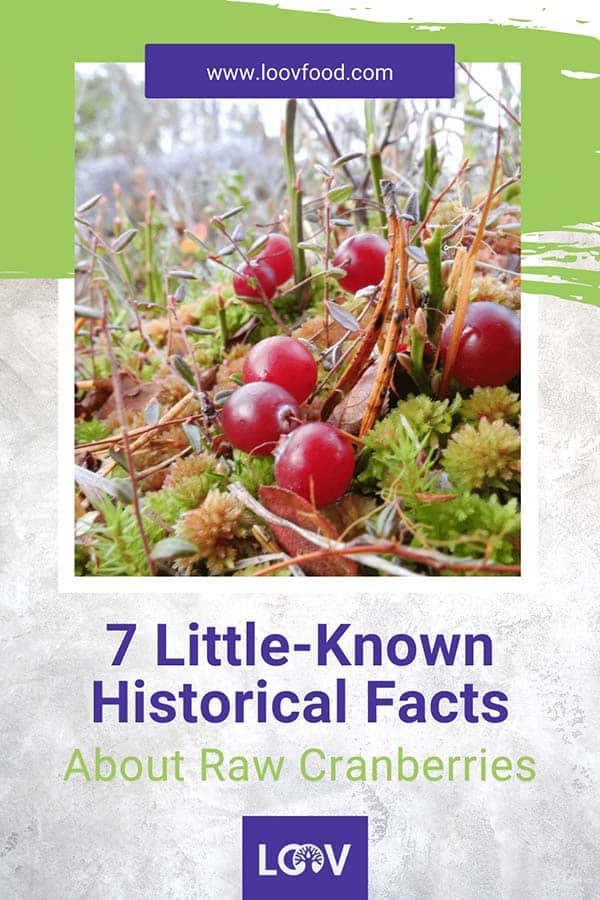The brilliant red, glossy, and tart cranberries are a Thanksgiving staple you’ll find in any and every spread. Their rich history as a must-have ingredient in Thanksgiving food, snacks, beverages, and sauces dates back to the 1500s when the Pilgrims had them as part of their first Turkey-day.
Over the centuries, cranberries have been given many names, including cowberries, moss berries, foxberries, and bounce berries. Many people also incorrectly refer to cranberries as lingonberries, but the two types of berries have distinct differences between them.
The name that stuck (cranberries) was borrowed from what the Pilgrims initially called the berries.
Table of Contents
1. Cranberries Are Favoured by Northern Climates
2. Cranberries Grow Near Water, Not in Water
3. Raw Cranberries Can Float
4. Raw Cranberries Have a Variety of Uses
5. Cranberry Vines Can Live For Over a Century
6. Wet Picking Cranberries Began in the 1960s
7. Henry Hall Is the Father of Cultivated Cranberries
8. Have You Tried Freeze-Dried Cranberry Powder?
The Pilgrims called the berries crane berries because their small pink blossoms that appeared in the spring looked like the head of a large wading bird, known as the crane.
Clearly, cranberries have a rich history that goes beyond their name and uses.
So today, we’d like to share some little-known historical facts about raw cranberries so you can enjoy their richness with a better understanding of how they came to be.
We share facts relating to the:
- Regions where cranberries thrive
- Queer or unique characteristics of raw cranberries
- Methods used to harvest cranberries
- Significant developments in cranberry cultivation and harvesting
1. Cranberries Are Favoured by Northern Climates
Raw cultivated cranberries (Vaccinium macrocarpon) are among the few fruits native to North America. The long days characterised by warm, sunny weather make the region perfect for pollination and growth of these and other berries, like gooseberries, blueberries, and Concord grapes.
As such, the states of Wisconsin and Massachusetts are the leading producers of cranberries in the US.
Northern European conditions, on the other hand, are great for the growth of wild cranberries (Vaccinium oxycoccos). The three months of potent sunshine every year help to produce Nordic wild raw cranberries that are rich in nutrients.
Here’s a table highlighting the main differences between wild and cultivated cranberries.
| Cultivated Cranberries (Vaccinium macrocarpon) | Wild Cranberries (Vaccinium oxycoccos) |
| Cultivated, carbon, and water footprint | Grows in wild bogs |
| Light red outside, white flesh inside | Dark red skin, white flesh inside |
| The berries are larger and the vines have tiny elongated leaves with rounded tips | Smaller cranberries and leaves have pointed tips and recurved edges |
At LOOV Food, we handpick our cranberries from the cleanest forests in Northern Europe to provide you with organic, flavourful wild cranberry products.
Our products, including Freeze-Dried Organic Wild Cranberry Powder, Organic Wild Cranberry Jam, and Organic Wild Cranberry Juice, are made using Nordic raw cranberries from Estonia.
Our products have high bioactive plant compounds, antioxidants, polyphenols, and vitamin C, K, and E content to ensure you enjoy all the health benefits of cranberries.
2. Cranberries Grow Near Water, Not in Water
Famous cranberry product commercials have formed a misconstrued notion in consumers’ minds that cranberries grow in water.
In truth, cranberries grow on low-running vines in soft marshy grounds or sandy bogs near wetlands.
Bogs are types of wetlands that consist of layers of sand, gravel, peat, and clay. They also have acidic water and thick sphagnum moss to keep cranberry vines healthy and protect them from insects and diseases.
The misconstrued idea has pegged the commonly used method of harvesting cranberries wet harvesting. The method involves flooding the bogs to facilitate easier and faster harvesting. When the bogs are flooded, farmers use a machine to knock off the floating berries from their vine; far easier than handpicking the berries one by one.
Many cranberry cultivators find it profitable to grow their bogs near water bodies or construct reservoirs near their bogs to supply the water flooding.
Other than flooding bogs for harvest, farmers also use the method during the growing season to:
- Protect cranberry plants from winter frost when temperatures are freezing
- Protect cranberries from hot weather in the summer
- Protect cranberries from spring frost
- Control pests
- Remove fallen leaves
💡 Expert Tip:
Wet picking is not used to harvest raw cranberries meant for fresh consumption. It’s mainly used to harvest cranberries meant for processing because fresh fruits need to be blemish free.
You’ll find that when using this process, the berries are hit using the “egg beater” to dislodge them from the vines, which can damage the ripe cranberries.
Instead, dry picking is used to harvest the fruits for fresh consumption because it delicately dislodges the berries from the vines without causing any dents.
3. Raw Cranberries Can Float
Did you know that cranberries are 90% water? Additionally, cranberries have four small air pockets that make them float.
The air pockets allow air to seep into the berries and make the tiny tart berries float to the surface during wet harvesting when the bogs are flooded.
The air pockets also result in another peculiar characteristic of cranberries: they can bounce.
When you drop a fresh ripe raw cranberry it should bounce a few inches off the ground. This discovery was made by Job “Peg Leg” Webb, a New Jersey cranberry grower in the 1880s.
The bounce in cranberries can be used to test the freshness and quality of the fruits to determine the varieties to be packed raw and the ones to be processed. This also means that damaged cranberries don’t bounce.
4. Raw Cranberries Have a Variety of Uses
Cranberries have been used throughout history mostly because of their medicinal properties. However, the tart red berries have other uses.
Native Americans had diverse uses of the berries, which included using cranberries to:
- Dry fabrics: They boiled cranberries and used the juice to dye rugs, blankets, clothing, and jewellery.
- Draw poison from arrow wounds: Cranberries were brewed together with cornmeal and used to draw poison from arrow wounds.
- Make Pemmican: This is a recipe that combines dried meat (often venison), fat, and cranberries; very similar to the modern-day protein bar. The “protein energy bar” was packed in animal hide bags and stored to be used later during the harsh winter months.
- Prevent scurvy: American sailors used cranberries in place of lime to keep scurvy at bay thanks to their rich vitamin C content.
- Tobacco substitute: Cranberry leaves were dried and used as a close tobacco substitute.
Today, you can still use cranberries for the above. Even better, you can incorporate cranberry products such as our Freeze-Dried Organic Wild Cranberry Powder in a variety of recipes and enjoy the fruits’ medicinal and health-boosting properties.
For example, a scoop of the powder a day will help to keep gut, liver, and urinary tract issues at bay. At LOOV Food, we intend to share the unique flavours and powerful nutrition of Nordic berries so you can enjoy high levels of resource-efficient energy every day.
“I use this in my cereal to help prevent UTIs. It seems to help.”
– spinka.genevieve
5. Cranberry Vines Can Live For Over a Century
Cranberry vines are resilient, low-growing perennial vines that can last a lifetime. Some cranberry vines in Cape Cod, Dennis, Massachusetts have lasted for over 150 years.
The vines grow up to 6 feet long with short vertical branches that form flower beds and berries. A few things needed to be done for the vines to last at least a century:
- The bogs need to be covered with an inch or two of sand at least every three years. The sand helps keep the vines healthy and prevent the growth of weeds and insects.
- A thick layer of mulch is applied to protect the vines from damage during winter.
- The plants are watered frequently to keep the soil evenly moist.
- Light application of organic fertiliser is also necessary in early spring.
6. Wet Picking Cranberries Began in the 1960s

Wet harvesting, as we’ve mentioned above, is a popular method of mass harvesting cranberries. But although mass cultivation of cranberries began in the 1800s, it wasn’t until the 1960s that wet harvesting was adopted as the mainstream method of harvesting berries.
Initially, the cranberries were handpicked from dry bogs. Dry harvesting required the bogs to be completely dry, and even a little dampness from heavy dew or light showers the night before could delay the harvest.
LOOV Food continues to use the dry harvesting method, specifically handpicking to ensure our products are made with the healthiest, freshest berries. We also believe that this allows you to connect with not only the food you eat but also the people and stories behind it.
Wet picking proved to be the most convenient method of harvesting cranberries and is now used to harvest more than 90% of the crop in the US.
In 1960, the first wet harvester was invented. It shakes the flooded vines, dislodges the cranberries from the vines, and leaves them floating on the water.
Today, wet harvesting happens from mid-September to early November when the reservoir waters have lost the summer heat and the cranberries are well-coloured and ripe.
The bogs are flooded with about 18 inches of water the night before harvesting, and the growers come in with machines fondly called “egg beaters” to knock the berries off their vines. The berries float to one side of the bog and are lifted by a conveyor into trucks that transport them to processing plants.
Although wet harvesting is efficient and convenient, it damages the berries and is unsuitable for harvesting raw cranberries for fresh consumption.
7. Henry Hall Is the Father of Cultivated Cranberries
Cultivation of cranberries started in 1816 when Captain Henry Hall—a revolutionary war veteran—noticed wild cranberry vines growing near his home in Cape Cod, Dennis, Massachusetts.
Upon keen observation, he realised that the best-producing vines had sand dunes blowing over them. He transplanted some vines to his Cape Cod home, and that’s how commercial cranberry cultivation began.
While his idea was not warmly received, and he was criticised for fiddling with the vines, other farmers soon started copying him. The other growers converted their swamps, wetlands, peat swamps, and wet meadows into cranberry farms to grow the deep red berries commercially.
Have You Tried Freeze-Dried Cranberry Powder?
Although you’d want to enjoy fresh raw cranberries from January to December, it’s just not possible. The long growing season of the berries makes them available from September to January only.
Luckily, we bring you a tasty and convenient way to enjoy your favourite seasonal fruit every day: Freeze-Dried Organic Wild Cranberry Powder. It tastes exactly like the fresh raw cranberries you’d like to buy from your local farmers’ market without added sugar, additives, fillers, and preservatives.
Try out our cranberry powder or other berry powders today for a taste of wild Nordic berry goodness.
Share on Pinterest:







